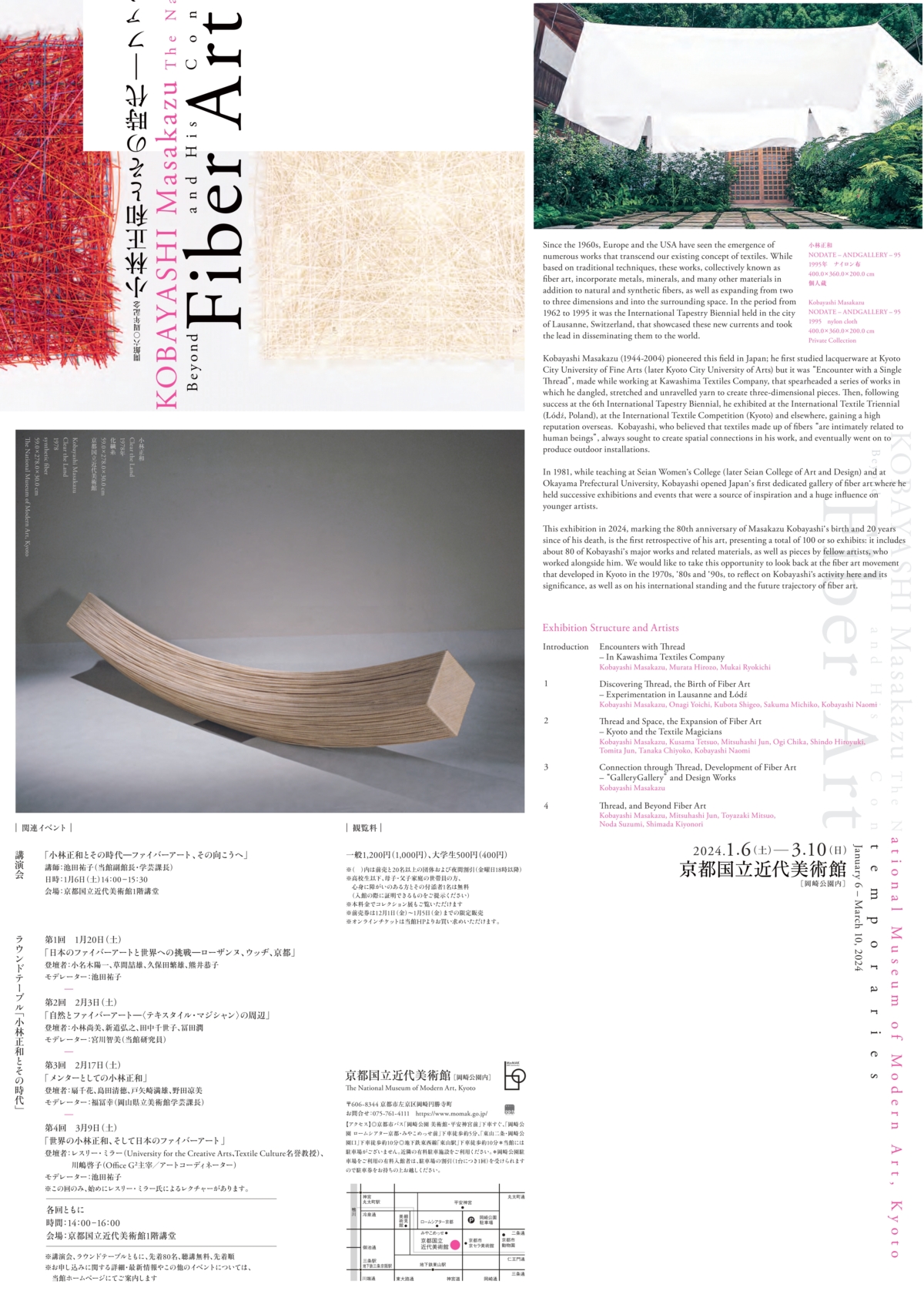KOBAYASHI Masakazu and His Contemporaries – Beyond Fiber Art
Since the 1960s, Europe and the USA have seen the emergence of numerous works that transcend our existing concept of textiles. While based on traditional techniques, these works, collectively known as fiber art, incorporate metals, minerals, and many other materials in addition to natural and synthetic fibers, as well as expanding from two to three dimensions and into the surrounding space. In the period from 1962 to 1995 it was the International Tapestry Biennial held in the city of Lausanne, Switzerland, that showcased these new currents and took the lead in disseminating them to the world.
Kobayashi Masakazu (1944-2004) pioneered this field in Japan; he first studied lacquerware at Kyoto City University of Fine Arts (later Kyoto City University of Arts) but it was “Encounter with a Single Thread”, made while working at Kawashima Textiles Company, that spearheaded a series of works in which he dangled, stretched and unravelled yarn to create three-dimensional pieces. Then, following success at the 6th International Tapestry Biennial, he exhibited at the International Textile Triennial (Łódź, Poland), at the International Textile Competition (Kyoto) and elsewhere, gaining a high reputation overseas. Kobayashi, who believed that textiles made up of fibers “are intimately related to human beings”, always sought to create spatial connections in his work, and eventually went on to produce outdoor installations.
In 1981, while teaching at Seian Women’s College (later Seian College of Art and Design) and at Okayama Prefectural University, Kobayashi opened Japan’s first dedicated gallery of fiber art where he held successive exhibitions and events that were a source of inspiration and a huge influence on younger artists.
This exhibition in 2024, marking the 80th anniversary of Masakazu Kobayashi’s birth and 20years since of his death, is the first retrospective of his art, presenting a total of 100 or so exhibits: it includes about 80 of Kobayashi’s major works and related materials, as well as pieces by fellow artists, who worked alongside him. We would like to take this opportunity to look back at the fiber art movement that developed in Kyoto in the 1970s, ’80s and ’90s, to reflect on Kobayashi’s activity here and its significance, as well as on his international standing and the future trajectory of fiber art.
- Artist
- KOBAYASHI Masakazu
- Organizer
- The National Museum of Modern Art, Kyoto
Photo by : Nobutada Omote





